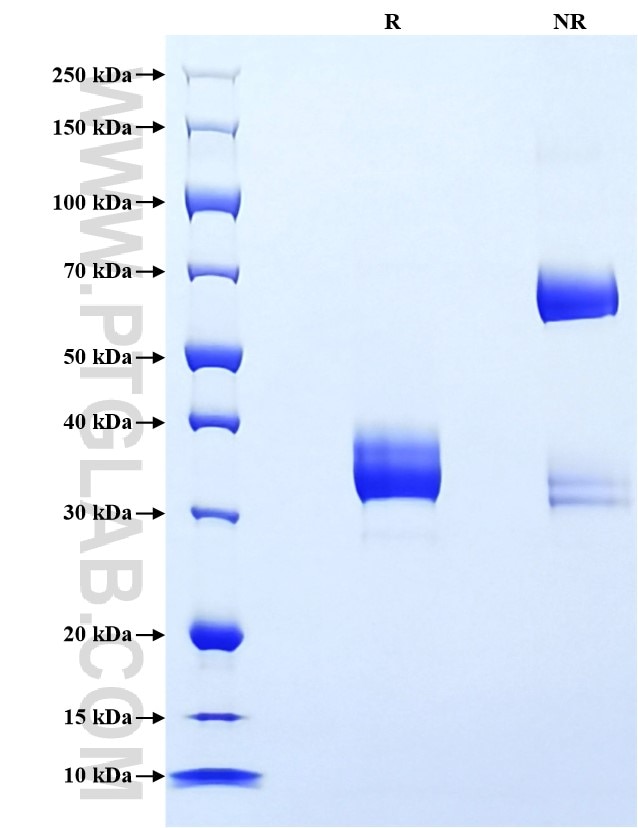Recombinant Mouse EGF protein (rFc Tag)
Species
Mouse
Purity
>90 %, SDS-PAGE
Tag
rFc Tag
Activity
not tested
Cat no : Eg1965
Validation Data Gallery
Product Information
| Purity | >90 %, SDS-PAGE |
| Endotoxin | <0.1 EU/μg protein, LAL method |
| Activity |
Not tested |
| Expression | HEK293-derived Mouse EGF protein Asn977-Arg1029 (Accession# P01132) with a rabbit IgG Fc tag at the N-terminus. |
| GeneID | 13645 |
| Accession | P01132 |
| PredictedSize | 33.2 kDa |
| SDS-PAGE | 32-38 kDa, reducing (R) conditions |
| Formulation | Lyophilized from 0.22 μm filtered solution in PBS, pH 7.4. Normally 5% trehalose and 5% mannitol are added as protectants before lyophilization. |
| Reconstitution | Briefly centrifuge the tube before opening. Reconstitute at 0.1-0.5 mg/mL in sterile water. |
| Storage Conditions |
It is recommended that the protein be aliquoted for optimal storage. Avoid repeated freeze-thaw cycles.
|
| Shipping | The product is shipped at ambient temperature. Upon receipt, store it immediately at the recommended temperature. |
Background
Epidermal growth factor (EGF) is a member of the epidermal growth factor superfamily. EGF preproprotein is proteolytically processed to generate the 53-amino acid epidermal growth factor peptide. EGF binds to the EGF receptor on the surface of cells and mediates intrinsic phosphorylation of the receptor on tyrosine residues. It has been detected in nearly all body fluids, such as urine (urogastrone), saliva, milk and platelet-rich plasma. EGF plays important roles in multiple biological processes, such as the regulation of cell growth, proliferation, and differentiation.
References:
1. Gregory H.et al. (1985).J Cell Sci Suppl.3:11-7. 2. Stroobant P.et al. (1985). Cell.42(1):383-93. 3. Carpenter G.et al. (1986). Exp Cell Res.164(1):1-10. 4. Derynck R.et al. (1986).J Cell Biochem.32(4):293-304. 5. St-Arnaud R.et al. (1984). Biochimie.66(7-8):515-30.
